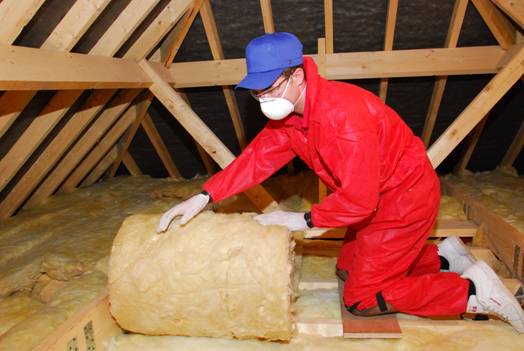Can Proper Insulation Save the Countryside from “Too Much Energy Efficiency”
All Aspects of Importance of Thermal Insulation

We have heard terms such as energy efficiency, carbon reduction, fuel poverty one too many times over the past few months and all due to the upcoming election and all the policies that political parties are dedicated to, whereas environmental and energy efficiency goals are a top priority. Also, there are many targets mentioned (such as zero carbon homes) but not enough said on the methods these goals are going to be achieved with or just what the potential consequences are.
Well, thanks to some groups and organizations, we have come to information that carbon reduction targets may as well have serious impact on the UK countryside due to the fact that the energy efficiency that we are striving for may lead to a vast number of wind mills and solar panels that will have to be built and which will inevitable occupy a lot of hectares throughout the countryside. Namely, the Campaign to Protect Rural England has revealed the report called Warm and Green which takes into account all the effects of set energy efficiency and carbon targets to the countryside and proposes some ways that potential negative effects can be avoided.

The reports’ key findings include:
- that a lot of people in the countryside are willing to invest into energy efficiency by retrofitting and upgrading their homes, but have limited funds. Namely, as the report shows, although 18% of the population live in the countryside, only 1% of the available funding is directed there.
- that the best way of achieving set targets is by combining home upgrades, reductions in commercial sector, transportation and using renewable energy sources. However, this could result in even 8.000 hectares of land covered in solar panels and around 3.500 new wind turbines which would again make a considerate impact on the countryside and its inhabitants.
Thus, the report accentuates the importance of cutting carbon emissions by primarily upgrading existing countryside homes which are often under-heated by applying acknowledged construction techniques and insisting on natural insulation materials, but in particular thinner solid wall insulation solutions.
The summery of the interviews showed that, when speaking of thermal upgrades, the points that were the most prevalent were insulation (cavity and solid wall, loft, under-floor insulation), secondary glazing, boiler replacement, solar panels and heat pumps etc. On the other hand, prevailing reasons for energy upgrades also differed from fuel poverty, renewable energy use to environmental protection.
So, what are the conclusions? Can proper insulation save countryside from too much energy efficiency? Basically, the report has shown and confirmed something that we have already known and is applicable in both cities and rural areas. Namely, in order of fighting fuel poverty, limiting energy consumption and reducing carbon emissions, we should all start from our own homes and undertake some of the available energy efficiency measures, whereas the government should be there to assist the funding of implementing such measures, regardless of the area. These measures could (and should) include any of the following:
-
Draught-proofing and proper ventilation could both contribute to air tightness of any home. Some of the most vulnerable areas are around doors and windows, loft hatches or between floorboards, whereas simple tricks such as weather stripping can go a long way. On the other hand, proper damp courses and vapour barriers, especially in older homes can also help fighting moisture which can also contribute to heat loss.
-
Using renewable energy sources, whenever possible through solar electricity panels, (which is a very good investment considering the Feed-in Tariffs), solar thermal panels as a source of solar hot water or biomass as an energy source.
-
Proper insulation in countryside homes is another key point that should considered. This especially goes for loft insulation which can be an effective yet not so expensive way of cutting energy consumption. Namely, the results of study from 2012 have shown that 14% of homes in five villages needed loft insulation and even 32% could benefit from it. Also, the interviewed people also indicated that they are very pleased with installed both internal and external solid and/or cavity wall insulation.

-
Finally, double or secondary glazing is also on the top of the priority list. Double glazed windows are proven to be over two times more effective than alternative single glazed windows in retaining heat. The alternative to double glazing to listed buildings is secondary glazing which can be as effective.
Improve your home insulation with our high-quality insulation products. Call us today, visit our online store or contact us for assistance by email

















































































































